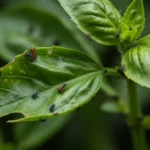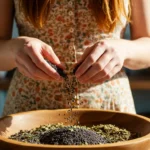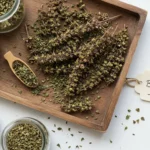Eight years ago, I, Kalsoom Imran, nearly wept over a basil plant, its leaves pale and droopy despite my best efforts. It wasn’t until I moved it from the shadowy corner to a sun-drenched spot that it exploded with life, a vibrant green revelation. That’s when I truly understood: where is the best place to plant basil is just as crucial as how you care for it.
Okay, let’s talk basil. I absolutely adore this herb – the smell, the taste, the way it brightens up any dish. But as much as I love it, I’ve learned that basil can be a bit finicky. It’s not just about popping a seed in the ground and hoping for the best. To really get that lush, fragrant basil you dream of, you need to understand its needs and choose the best location for basil. I’ve had my share of basil-growing mishaps, so trust me, I’ve done the research (and the trial and error!).
Understanding Basil’s Needs: The Foundation for Success
Before we dive into specific spots, let’s get down to the basics. Like any living thing, basil has its preferences. Understanding these is crucial to finding the ideal spot to plant basil.
Sunlight for Basil: How Much is Enough?
First and foremost, basil is a sun worshipper. It absolutely craves light. If you want a healthy, productive plant, you need to give it plenty of sunshine. How much sun does basil need? Well, ideally, it needs at least 6-8 hours of direct sunlight each day. That’s not just a suggestion; it’s a requirement for optimal growth. Think of it this way: sunlight is basil’s fuel. Without enough, it’s going to be weak, leggy, and frankly, not very flavorful. The sun requirements for basil are non-negotiable.
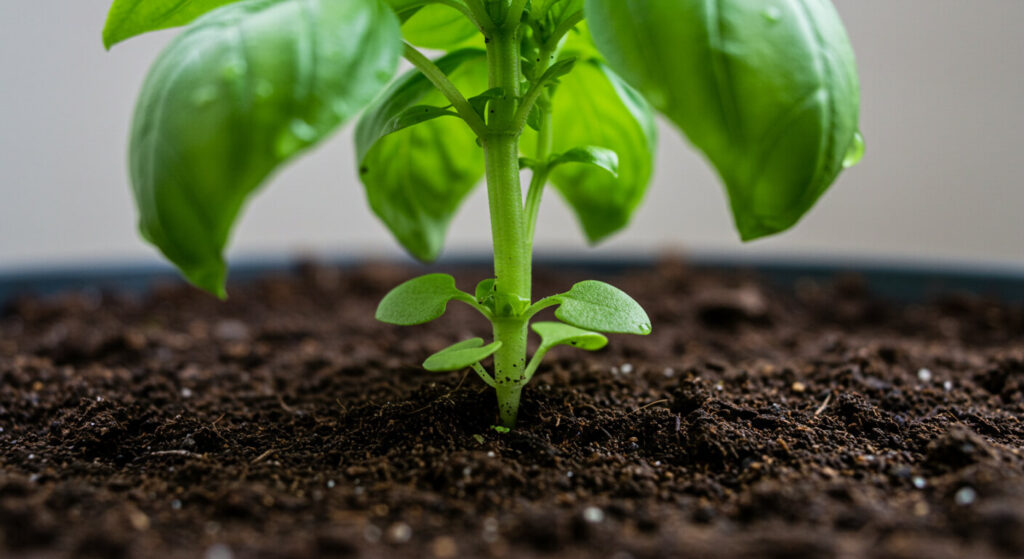
I’ve seen firsthand what happens when basil doesn’t get enough sun. My first attempt was in a shady corner of my yard, thinking it would be “protected.” Big mistake! The plant stretched out, desperately reaching for any light it could find, and the leaves were pale and small. That’s a classic sign of basil sunlight needs being unmet. So, when considering the best conditions for basil, make sure sunlight is at the top of your list. And remember, when thinking about basil growing tips location, always prioritize maximizing light exposure.
Soil for Basil: The Perfect Growing Medium
Sun isn’t the only thing basil is picky about. The soil it’s planted in is equally important. What kind of soil for basil is best? Well, it prefers well-draining soil that’s rich in organic matter. Think of it as a comfy, nutrient-rich bed for its roots. The soil requirements for basil are quite specific, it doesn’t like to sit in soggy soil, which can lead to root rot.
Good drainage is key. Basil needs soil that allows water to pass through easily, but also retains some moisture. It’s a delicate balance. When considering basil soil needs, think of soil that’s loose and crumbly, not compacted and heavy. The best environment for basil includes soil that’s not only well-draining but also provides the nutrients it needs to flourish. And as part of your basil growing tips location strategy, you might need to amend your soil with compost or other organic matter to improve its quality.
Choosing the Ideal Spot: Outdoors vs. Indoors
Now that we’ve covered the basics, let’s talk about where to actually plant your basil. You have two main options: outdoors or indoors. Both have their pros and cons, and the best place to grow basil for you will depend on your specific circumstances.
Planting Basil Outdoors: Finding the Best Location
If you’re lucky enough to have a garden, growing basil outdoors can be a very rewarding experience. The key is to choose the best place to grow basil outdoors. This means considering factors like sunlight, soil, and protection from the elements. When planting basil in the garden, look for a spot that gets plenty of direct sunlight throughout the day. Also, make sure the soil is well-draining and amended with compost.
Avoid low-lying areas where water tends to collect, as that’s a recipe for disaster. The basil location in garden is crucial; you want to avoid problem areas that might lead to root rot or other issues. When deciding where to plant basil for best results, think about how much sun your chosen spot gets throughout the day. The basil garden placement should integrate the herb into a sunny and well-drained area of your garden.
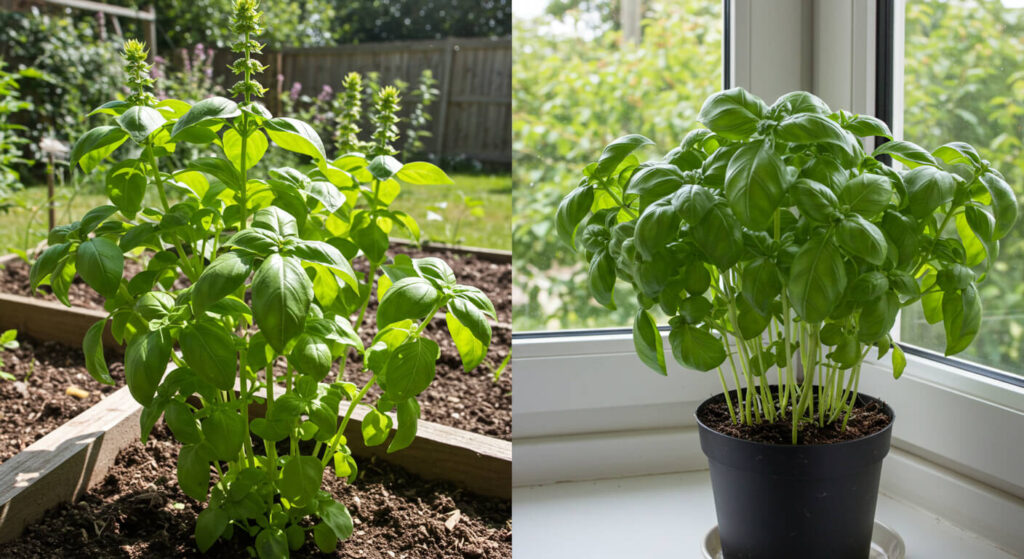
Planting Basil Indoors: Creating the Right Environment
If you don’t have a garden, or if the weather isn’t cooperating, growing basil indoors is a great option. The best place to grow basil indoors is in a pot near a sunny window. A south-facing window is usually ideal, as it provides the most light. When planting basil in pots, make sure the container has drainage holes to prevent waterlogging. You also need to ensure proper airflow around the plant.
The basil location in containers should be a spot that gets plenty of light, but is also protected from drafts. When thinking about where to put basil plant indoors, remember that it needs warmth and consistent temperatures. The best place for basil in pots is one that mimics the ideal outdoor conditions as much as possible.
Specific Location Factors for Thriving Basil
Okay, so we’ve covered the basics of sun, soil, and indoor vs. outdoor. But there’s more to it than that. Let’s dig a bit deeper into some specific factors that can impact your basil’s growth.
Optimal Basil Location: Key Factors to Consider
Finding the ideal spot to plant basil is about more than just sun and soil; it’s about combining all the factors together. You need to find a location that provides the right balance of sunlight, well-draining soil, and protection from extreme weather. Choosing the right spot for basil can be tricky, but it’s worth the effort.
Avoid common mistakes like planting in a shady spot or in heavy, waterlogged soil. When choosing location for basil, evaluate your options carefully. Consider the microclimates in your yard or home. How to choose basil location involves a step-by-step approach, considering each aspect of the plant’s needs. The best location for basil is one that meets all of its requirements.
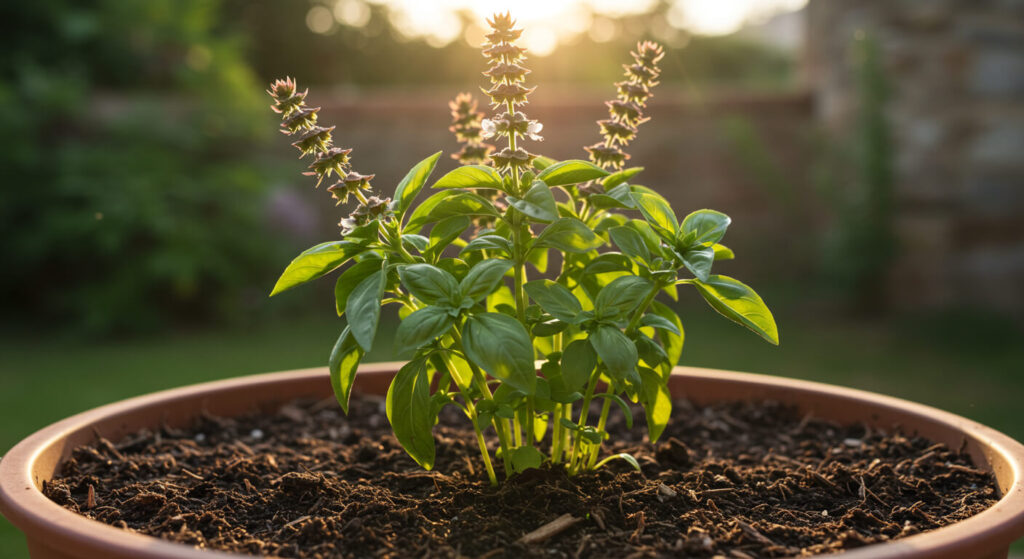
Basil Growing Conditions: Beyond Sun and Soil
Beyond sun and soil, the where basil grows best is also influenced by temperature, humidity, and protection from the elements. Basil prefers warm temperatures and moderate humidity. Where does basil thrive? In an environment that is consistently warm and not too dry.
The basil plant needs location to be sheltered from strong winds and frost. These conditions can damage the plant and hinder its growth. The best area to plant basil might be one with a microclimate that offers a bit of protection. When considering basil growing advice location, think about how you can mitigate any specific challenges in your environment.
Maximizing Basil Growth: Location and Beyond
Now that we’ve covered all the key factors, let’s talk about how to maximize your basil’s growth through strategic placement and care.
Basil Plant Placement: Positioning for Success
The basil plant positioning is important for optimizing space and airflow. You don’t want your basil to be crowded, as this can lead to poor air circulation and disease. Consider basil placement options, such as companion planting. Basil is known to grow well alongside tomatoes, peppers, and other vegetables.
How to site basil involves strategic garden design. Think about how you can create an environment that supports healthy growth. The basil growing location has an overall environmental impact on the plant’s health. And when thinking about where to plant basil herb, consider the specific needs of an herb garden.
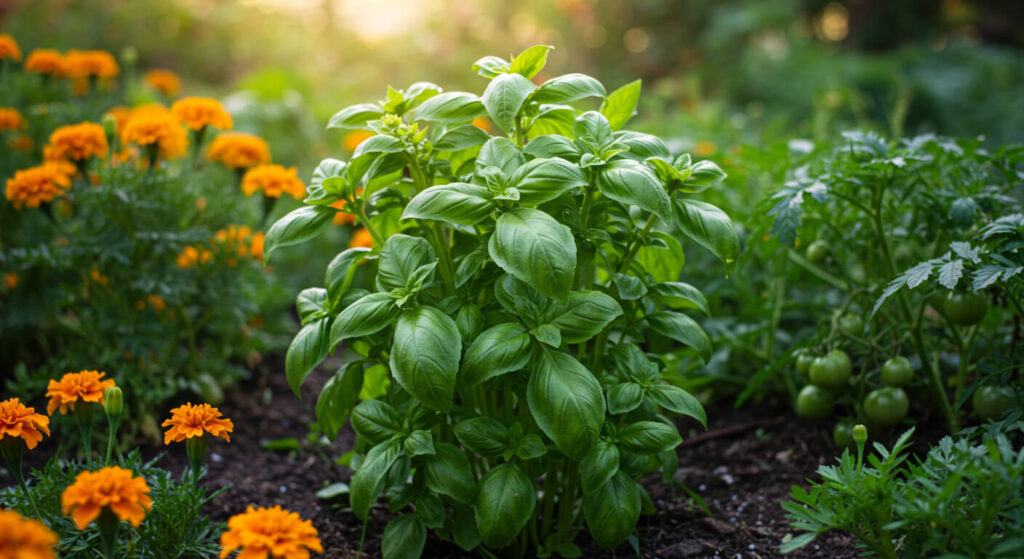
Where to Plant Basil for Maximum Growth: Putting it All Together
So, what’s the bottom line? What’s the ideal growing spot for basil? It’s a place that gets at least 6-8 hours of direct sunlight per day, has well-draining soil that’s rich in organic matter, and is protected from strong winds and frost. The best place for basil in garden is a sunny, well-drained area.
Where to grow basil successfully involves paying attention to all these factors. When planting basil outdoors, make sure you’ve met all of its needs for sunlight, soil, and protection. And when planting basil indoors, make sure you’ve created an environment that mimics the ideal outdoor conditions as much as possible.
In conclusion, finding the best location for basil is about understanding its needs and creating an environment where it can thrive. It’s not just about popping a seed in the ground and hoping for the best. It’s about paying attention to the details and making sure your basil gets everything it needs to grow into a healthy, fragrant, and delicious plant. I hope this guide helps you on your basil-growing journey! Happy planting!


